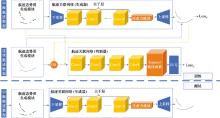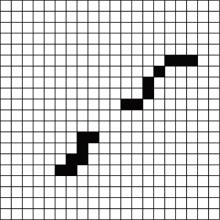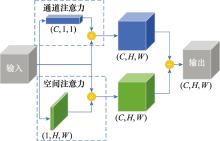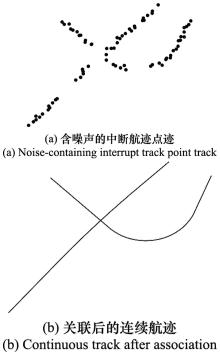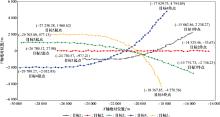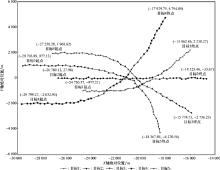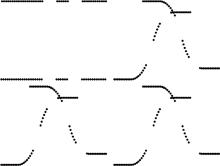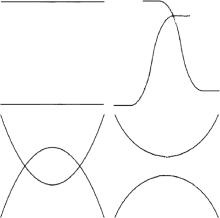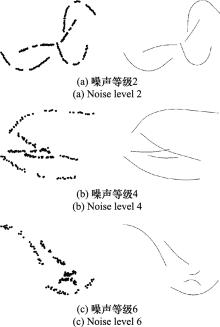Systems Engineering and Electronics ›› 2022, Vol. 44 ›› Issue (5): 1543-1552.doi: 10.12305/j.issn.1001-506X.2022.05.15
• Sensors and Signal Processing • Previous Articles Next Articles
Generative track segment consecutive association method
Pingliang XU, Yaqi CUI*, Wei XIONG, Zhenyu XIONG, Xiangqi GU
- Research Institute of Information Fusion, Naval Aviation University, Yantai 264001, China
-
Received:2021-01-30Online:2022-05-01Published:2022-05-16 -
Contact:Yaqi CUI
CLC Number:
Cite this article
Pingliang XU, Yaqi CUI, Wei XIONG, Zhenyu XIONG, Xiangqi GU. Generative track segment consecutive association method[J]. Systems Engineering and Electronics, 2022, 44(5): 1543-1552.
share this article
Table 1
Association results output channels under different sub-sampling dimensions"
| 输出通道 | AP | P@5 | P@10 | P@20 | SSIM |
| 8 | 0.40 | 0.80 | 0.60 | 0.20 | 0.863 7 |
| 16 | 0.63 | 1.00 | 0.70 | 0.50 | 0.891 4 |
| 32 | 0.68 | 1.00 | 0.80 | 0.55 | 0.893 9 |
| 64 | 0.71 | 1.00 | 0.90 | 0.55 | 0.904 3 |
| 128 | 0.00 | 0.00 | 0.00 | 0.00 | 0.414 5 |
| 256 | 0.00 | 0.00 | 0.00 | 0.00 | 0.365 8 |
| 1 | YEOM S W, KIRUBARAJAN T, BAR S Y. Improving track continuity using track segment association[C]//Proc. of the IEEE Aerospace Conference, 2003. |
| 2 | SUN J P, WANG N Y, ZHANG Z G. Track segment association of maneuvering target based on expectation maximization[C]//Proc. of the 11th International Congress on Image and Signal Processing, BioMedical Engineering and Informatics, 2018. |
| 3 |
ZHANG S , BAR S Y . Track segment association for GMTI tracks of evasive move-stop-move maneuvering targets[J]. IEEE Trans.on Aerospace and Electronic Systems, 2011, 47 (3): 1899- 1914.
doi: 10.1109/TAES.2011.5937272 |
| 4 |
DEMPSTER A P , LAIRD N M , RUBIN D B . Maximum likelihood from incomplete data via the EM algorithm[J]. Journal of the Royal Statistical Society: Series B (Methodological), 1977, 39 (1): 1- 22.
doi: 10.1111/j.2517-6161.1977.tb01600.x |
| 5 | ZHU H Y , HAN S Y . Track-to-track association based on structural similarity in the presence of sensor biases[J]. Journal of Applied Mathematics, 2014, 294657. |
| 6 | 杜渐, 夏学知. 面向航迹中断的模糊航迹关联算法[J]. 火力与指挥控制, 2013, 38 (6): 68- 71. |
| DU J , XIA X Z . A fuzzy track association algorithm in track interrupt-oriented[J]. Fire Control & Command Control, 2013, 38 (6): 68- 71. | |
| 7 |
刘颢, 陈世友, 汪学东, 等. 一种自适应航迹关联算法[J]. 电子学报, 2013, 41 (12): 2416- 2421.
doi: 10.3969/j.issn.0372-2112.2013.12.015 |
|
LIU H , CHEN S Y , WANG X D , et al. An adaptive track correlation algorithm[J]. Chinese Journal of Electronics, 2013, 41 (12): 2416- 2421.
doi: 10.3969/j.issn.0372-2112.2013.12.015 |
|
| 8 | 齐林, 王海鹏, 熊伟, 等. 基于先验信息的多假设模型中断航迹关联算法[J]. 系统工程与电子技术, 2015, 37 (4): 732- 739. |
| QI L , WANG H P , XIONG W , et al. Track segment association algorithm based on multiple-hypothesis models with priori information[J]. Journal of Systems Engineering and Electronics, 2015, 37 (4): 732- 739. | |
| 9 | DONG H, YU S M, WU C, et al. Semantic image synthesis via adversarial learning[C]//Proc. of the IEEE International Conference on Computer Vision, 2017: 5706-5714. |
| 10 | KANEKO T, HIRAMATSU K, KASHINO K. Generative attribute controller with conditional filtered generative adversarial networks[C]//Proc. of the IEEE Conference on Computer Vision and Pattern Recognition, 2017. |
| 11 | KARACAN L, AKATA Z, ERDEM A, et al. Learning to generate images of outdoor scenes from attributes and semantic layouts[EB/OL]. [2021-01-25]. https://arXiv.org/pdf/1612.00215.pdf. |
| 12 | LEDIG C, THEIS L, HUSZAR F, et al. Photo-realistic single image super-resolution using a generative adversarial network[C]//Proc. of the IEEE Conference on Computer Vision and Pattern Recognition, 2017: 4681-4690. |
| 13 | PATHAK D, KRAHENBUHL P, DONAHUE J, et al. Context encoders: feature learning by inpainting[C]//Proc. of the IEEE Conference on Computer Vision and Pattern Recognition, 2016: 2536-2544. |
| 14 | SANGKLOY P, LU J W, FANG C, et al. Scribbler: controlling deep image synthesis with sketch and color[C]//Proc. of the IEEE Conference on Computer Vision and Pattern Recognition, 2017: 5400-5409. |
| 15 | WANG X L, GUPTA A. Generative image modeling using style and structure adversarial networks[C]//Proc. of the European Conference on Computer Vision, 2016: 318-335. |
| 16 | ZHANG Z F, SONG Y, QI H R. Age progression/regression by conditional adversarial autoencoder[C]//Proc. of the IEEE Conference on Computer Vision and Pattern Recognition, 2017: 5810-5818. |
| 17 | GOODFELLOW I , POUGET A J , MIRZA M , et al. Generative adversarial nets[J]. Advances in Neural Information Processing Systems, 2014, 27, 2672- 2680. |
| 18 | MNIH V , HEESS N , GRAVES A . Recurrent models of visual attention[J]. Advances in Neural Information Processing Systems, 2014, 2, 2204- 2212. |
| 19 | WANG K F , GOU C , DUAN Y J , et al. Generative adversa-rial networks: the state of the art and beyond[J]. Acta Automatica Sinica, 2017, 43 (3): 321- 332. |
| 20 | VINCENT P, LAROCHELLE H, BENGIO Y, et al. Extracting and composing robust features with denoising autoencoders[C]//Proc. of the 25th International Conference on Machine Learning, 2008: 1096-1103. |
| 21 | ULYANOV D, VEDALDI A, LEMPITSKY V. Instance normalization: the missing ingredient for fast stylization[EB/OL]. [2021-01-25]. https//arXiv.org/abs/1607.08022v1. |
| 22 | GLOROT X, BORDES A, BENGIO Y. Deep sparse rectifier neural networks[C]//Proc. of the 14th International Confe-rence on Artificial Intelligence and Statistics, 2011: 315-323. |
| 23 | HE K M, ZHANG X Y, REN S Q, et al. Deep residual learning for image recognition[C]//Proc. of the IEEE Conference on Computer Vision and Pattern Recognition, 2016: 770-778. |
| 24 | SIMONYAN K, ZISSERMAN A. Very deep convolutional networks for large-scale image recognition[EB/OL]. [2021-01-25]. https//arXiv.org/abs/1409.1556. |
| 25 | DUMOULIN V, VISIN F. A guide to convolution arithmetic for deep learning[EB/OL]. [2021-01-25]. https//arXiv.org/abs/1603.07285. |
| 26 | PENG X B, KANAZAWA A, TOYER S, et al. Variational discriminator bottleneck: improving imitation learning, inverserl, and gans by constraining information flow[EB/OL]. [2021-01-25]. https//arXiv.org/abs/1810.00821v4. |
| 27 | RATLIFF L J, BURDEN S A, SASTRY S S. Characterization and computation of local Nash equilibria in continuous games[C]//Proc. of the IEEE 51st Annual Allerton Conference on Communication, Control, and Computing, 2013: 917-924. |
| 28 | ZHAO H , GALLO O , FROSIO I , et al. Loss functions for image restoration with neural networks[J]. IEEE Trans.on Computational Imaging, 2016, 3 (1): 47- 57. |
| 29 |
LI X R , JILKOV V P . Survey of maneuvering target tracking. Part I. dynamic models[J]. IEEE Trans.on Aerospace and Electronic Systems, 2003, 39 (4): 1333- 1364.
doi: 10.1109/TAES.2003.1261132 |
| 30 |
WANG Z , BOVIK A C , SHEIKH H R , et al. Image quality assessment: from error visibility to structural similarity[J]. IEEE Trans.on Image Processing, 2004, 13 (4): 600- 612.
doi: 10.1109/TIP.2003.819861 |
| 31 | PASZKE A, GROSS S, MASSA F, et al. Pytorch: an imperative style, high-performance deep learning library[EB/OL]. [2021-01-25]. https//arXiv.org/abs/1912.01703v1. |
| 32 |
YEOM S W , KIRUBARAJAN T , BAR S Y . Track segment association, fine-step IMM and initialization with Doppler for improved track performance[J]. IEEE Trans.on Aerospace and Electronic Systems, 2004, 40 (1): 293- 309.
doi: 10.1109/TAES.2004.1292161 |
| 33 |
RAGHU J , SRIHARI P , THARMARASA R , et al. Comprehensive track segment association for improved track continuity[J]. IEEE Trans.on Aerospace and Electronic Systems, 2018, 54 (5): 2463- 2480.
doi: 10.1109/TAES.2018.2820364 |
| [1] | Xiao HAN, Shiwen CHEN, Meng CHEN, Jincheng YANG. Open-set recognition of LPI radar signal based on reciprocal point learning [J]. Systems Engineering and Electronics, 2022, 44(9): 2752-2759. |
| [2] | Rongxiang LIU, Lin WU, Zhige XIE, Honglin LIU. Auxiliary situation analysis for air defense system based on generative adversarial network [J]. Systems Engineering and Electronics, 2022, 44(8): 2522-2529. |
| [3] | Bowei QIN, Lei JIANG, Hua XU, Zisen QI. Modulation recognition algorithm based on residual generation adversarial network [J]. Systems Engineering and Electronics, 2022, 44(6): 2019-2026. |
| [4] | Kai SHAO, Miaomiao ZHU, Guangyu WANG. Modulation recognition method based on generative adversarial andconvolutional neural network [J]. Systems Engineering and Electronics, 2022, 44(3): 1036-1043. |
| [5] | Tao WU, Lunwen WANG, Jingcheng ZHU. Camouflage image segmentation based on transfer learning and attention mechanism [J]. Systems Engineering and Electronics, 2022, 44(2): 376-384. |
| [6] | Tao JIN, Xiaofeng WANG, Runlan TIAN, Xindong ZHANG. Rapid recognition method of radar emitter based on improved 1DCNN+TCN [J]. Systems Engineering and Electronics, 2022, 44(2): 463-469. |
| [7] | Yutang MA, Peng SUN, Jieyong ZHANG, Peng WANG, Yunfei YAN, Liang ZHAO. Air group intention recognition method under imbalance samples [J]. Systems Engineering and Electronics, 2022, 44(12): 3747-3755. |
| [8] | Yiqiang TANG, Xiaopeng YANG, Shengming ZHU. Low-orbit satellite channel prediction algorithm based on the hybrid CNN-BiLSTM using attention mechanism [J]. Systems Engineering and Electronics, 2022, 44(12): 3863-3870. |
| [9] | Lingzhi QU, Junan YANG, Hui LIU, Keju HUANG. Method for individual identification of communication radiation source embedded in attention mechanism [J]. Systems Engineering and Electronics, 2022, 44(1): 20-27. |
| [10] | Ziyan LIU, Shanshan MA, Jing LIANG, Mingcheng ZHU, Lei YUAN. Attention mechanism based CNN channel estimation algorithm in millimeter-wave massive MIMO system [J]. Systems Engineering and Electronics, 2022, 44(1): 307-312. |
| [11] | Pengyu CAO, Chengzhi YANG, Limeng SHI, Hongchao WU. LPI radar signal enhancement based on DAE-GAN network [J]. Systems Engineering and Electronics, 2021, 43(9): 2493-2500. |
| [12] | Bangyan CUI, Runlan TIAN, Dongfeng WANG, Gang CUI, Jingyuan SHI. Radar emitter identification based on attention mechanism and improved CLDNN [J]. Systems Engineering and Electronics, 2021, 43(5): 1224-1231. |
| [13] | Fan ZHAO, Hu JIN. Communication jamming waveform generation technology based on GAN [J]. Systems Engineering and Electronics, 2021, 43(4): 1080-1088. |
| [14] | Shiyang GAO, Huixu DONG, Runlan TIAN, Xindong ZHANG. Radar emitter signal recognition method based on SRNN+Attention+CNN [J]. Systems Engineering and Electronics, 2021, 43(12): 3502-3509. |
| [15] | Ruochen ZHAO, Jingdong WANG, Siyu LIN, Dongze GU. Small building detection algorithm based on convolutional neural network [J]. Systems Engineering and Electronics, 2021, 43(11): 3098-3106. |
| Viewed | ||||||
|
Full text |
|
|||||
|
Abstract |
|
|||||
